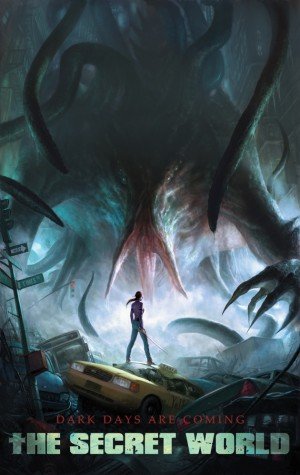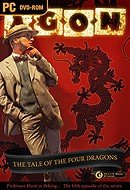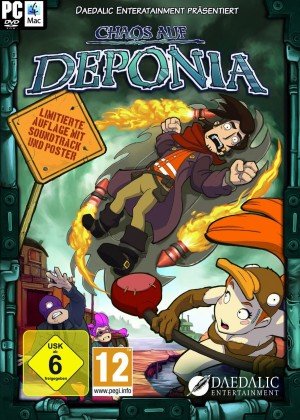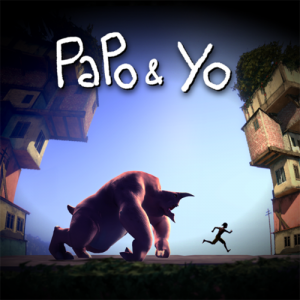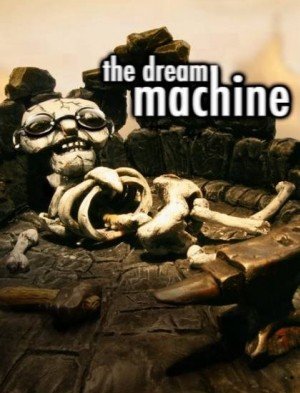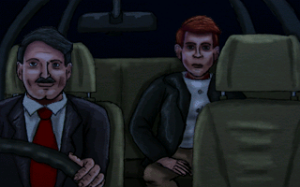The Secret World

It may be a Massively Multiplayer Online Roleplaying game, but there’s plenty about The Secret World that makes it very appealing to an adventure gamer: its modern fantasy/horror setting, a major emphasis on story and puzzles, and of course a heavy dose of Ragnar Tørnquist. That’s right, this is the brainchild of The Longest Journey’s renowned creator, so if that doesn’t warrant our attention I don’t know what does. There have been attempts in the past to marry the social shenanigans of an MMO with the puzzle-solving of an adventure game, but the limited audience for games like Myst Online sealed their fates early on. Yet if there’s one company that can make this seemingly unholy marriage work it’s Funcom, a company that have found great success in both genres. Welcome then to The Secret World, a different take on the MMO that could well be an answer to our prayers.
Although this article is arriving nearly a year after the game originally launched, there is good reason for the delay. As a diehard adventure gamer, I can’t leave a story half-done. Thus, the ongoing story arc that runs through The Secret World had to be finished before I could even consider writing about it. That story took me ten months, I kid you not. This is primarily down to two reasons: the first is there’s a huge amount of content in this game for a story-hungry gamer to gorge on, and the second is that you can do a lot of it on your own. I’ve always had reservations about teaming up with other players, but I managed to play the majority of this game solo – right up to the end of the main campaign, in fact, with only the occasional meet-up with a friendly fellow player to advance my character past the difficult bosses. So if the notion of playing with others is daunting then worry not, as you can dip into the social side as much or as little (to a point) as you like.
You start the game by building your character; he or she can be designed however you wish but their final appearance has no bearing on the game itself. You can tweak all sorts of details like hair colour, face shape, clothing and accessories, which lets you create your own doppelganger or your ultimate adventurer. What does alter the game is your next set of options: picking your society. You have the choice between the London-based Templars (a set-up familiar to any Broken Sword fan), the New York Illuminati, and the South Korean Dragon. Whichever faction you choose dictates the city you start in, the action in the opening cinematic, and the contacts you’ll meet. These differences are still fairly cosmetic, as the overarching story plays out the same way for all three, so you can base your decision more on the city you prefer or the costumes you like. There are a few different side missions that are specific to each faction, however, so the completists out there may want to create several characters to try all sides.
Once you’re primped, plucked and ready for action, it’s time to enter The Secret World (you’ll need to create an account with Funcom, but there’s no monthly charge anymore so no need to worry about handing over credit card details). A pretty epic opening cinematic sets up a certain amount of the story, but mostly introduces a mysterious foundation for your character: as your avatar lies sleeping, a small glowing bee burrows its way into your mouth. Waking up with a start, you find strange powers are coursing through your veins. These powers are kept nondescript to begin with, but gradually they grow and finally manifest as glowing auras and bursts of electricity. Before long, after nearly exploding in your apartment, you attract the attention of your chosen faction and are visited by a mysterious representative. This is one of the times when the faction you’ve chosen directly affects the storyline. Haunted by visions and dreams of a world beyond ours, you follow your rep (either willingly or unwillingly) to your society’s headquarters to be fully briefed on the secret world.
As I’m a Brit, I chose the Templars so my experience details the game from their perspective. You soon find out you’re a chosen one who has been recruited to fight for the society. The factions compete with each other over the mysteries of the secret world. As the game is set firmly in the here-and-now, you’ll find references to Google, Wikipedia and various other modern and pop culture phenomena. The eponymous secret world refers to all the weird stuff that happens on our planet that we normal folk are not aware of: zombies, djinn, vampires, draug, trolls; you name it, they exist here. So whilst your starting city acts as your main hub and home, the real drama happens in particular action zones around the globe. So far there are three such zones that make up the bulk of the missions, with each split up into two or three smaller areas. There’s the Lovecraft-inspired Kingsmouth – a damp New England sea town complete with soggy disfigured sea denizens and zombie hordes; the Scorched Desert – an Egyptian nightmare full of cultists and false gods; and finally Transylvania, which speaks for itself really.
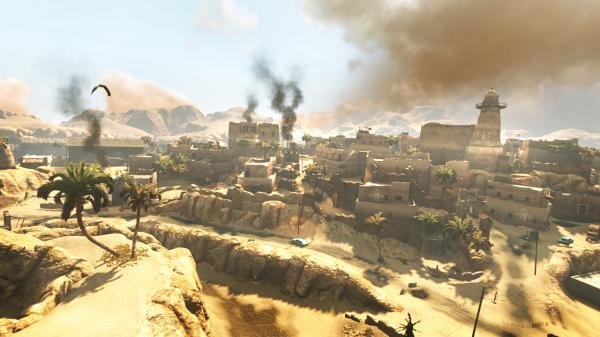
You move your third-person avatar using the WASD keys and pan the camera with the mouse or arrow keys. Important features like your quest journal, inventory, map and combat abilities have their own distinct keys. Yes, combat. As this is an MMORPG, you do indeed need to fight to advance your character and the story. If you try to skip ahead you’ll find enemies are too difficult and thus impossible to progress past. This is the main reason for such a long main story arc if you’re playing on your own, as you can’t just run your way through the main quest.
Encounters are frequent, but I found the fighting easy enough to get my rookie head around, so I’m sure most players will have no problem. If you’re spotted by a monster, you can stand your ground or run away with your tail between your legs. You attack by first locking onto your target with the Tab key then repeatedly tapping keys 1-8, which unleash the abilities you’ve previously mapped to them. Small melee attacks can be repeated ad nauseam (like slashes with a dagger or swipe of a sword), but bigger attacks require you to wait between uses (a hail of thunder and lightning, for example), and you're free to move around to dodge return attacks. The EXP (experience points) you gain from quests and kills are translated into SP and AP that can be used to improve your equipment and attacks. If the current encounters are too difficult, you can go back and try some of the easier missions (marked either ‘easy’ or ‘normal’ as opposed to ‘hard’ or ‘devastating’) to improve your ability. If you die, you’re resurrected in spiritual form at the nearest Anima well and must run back to your fallen body before you can continue with the game – this can be quite a trek sometimes, but at least you don’t have to fight past the sections you’ve already completed.
I've kept the combat analysis intentionally brief, but as a primer for less action-oriented gamers, here are a few extra pointers for further help:
1) Blue kit is better than green; get as many blues as you can.
2) The best kit is found in dungeons (you’ll need a team for these) or bought (with in-game currency, not real money) from the market.
3) Pick a deck and work towards it: these are predefined sets of skills that help you focus where to spend your AP/SP (they also come with a funky costume if you complete the set.)
4) Finally, if you have a few spare pennies (in real life, as there is an item store where you can spend actual money), you can do worse than to grab a couple of potions to increase your AP more quickly; it’ll mean you won’t be stuck on a boring battle for too long.
Once you’re a lean mean fighting machine with a taste for zombie flesh, after the first few establishing missions in your starting city you’re dispatched to Kingsmouth. In my case I traveled from London through Agartha, a network of roads linking London with all the action zones. You’re initially following the first objective of the main story quest, which shows up as an X on the mini-map in the top right of the screen. Upon arriving in Kingsmouth, you soon find that all is not well in this sleepy New England port town; the dead have started to rise and strange creatures are shuffling out of the waters.

H.P. Lovecraft's inspiration is immediately evident – if you’ve played The Shadow of the Comet or seen movies like The Fog, you’ll recognise the familiar setting as soon as you arrive. In fact, creating such atmosphere is what The Secret World does exceptionally well. A lot of care and attention has gone into the stunning surroundings and environments, along with the correct blend of haunting drones and nerve-shredding wails. Kingsmouth is a dark mix of sorry-looking buildings shrouded in mist that rolls gently in from the murky sea. The colours are rich and moody, with extraordinary amounts of detail to really bring the place to life. You’ll need a powerful PC to get the most out of the graphics, but even on the lowest setting it’s still a treat for the eyes. Similarly, a lot of effort has gone into a soundtrack that never ceases to impress. There’s a single battle tune that can sometimes get a little repetitive, but the atmospheric music as you move through the game is marvellously fitting without ever feeling overbearing.
Eventually you arrive at your first point of contact: Sheriff Bannerman, who's part of a wonderful cast of secondary characters that includes Moose, with his unrequited love for deputy Andy, Anastasia and her living wagon, and some witty Oxford archaeologists in the desert. All the non-player characters (NPCs) are fully voiced with their own cutscenes and conversation options. The voice talent on offer is excellent, with no one standing out as clunky or unnatural. Their dialogue is usually a mix of glib off-the-cuff remarks and heavy-handed ramblings about the current plight, including their own opinions on the spiritual and physical ramifications, akin to the conversations between April and Cortez in The Longest Journey. Although not written exclusively by Tørnquist, the intelligent script befits his previous work, so his fans will feel right at home. Whilst you can’t respond (your character never speaks), clicking through the dialogue speech bubbles is a delight as you listen to each individual's take on the situation around them. There’s also a wonderful sense of humour; one denizen of Kingsmouth managed to avoid the first wave of zombies by being inappropriately ‘tied up’ in her bedroom at the time.
After visiting the sheriff, you’ll want to branch out and take on some of the side quests available. You are free to meet NPCs (marked on your map) in any order (limited only by the difficulty of the baddies surrounding their location), as it’s from these characters that you pick up the missions that help you proceed through the game. All side quests are split into tiers, with each objective moving you onto the next tier once achieved; missions have an average of 4 to 5 tiers, with a whole mission taking roughly 20 – 30 minutes to complete. There are even smaller side missions that appear in the landscape as turquoise boxes, but they’re really just good for experience points; they have no associated story and only take a couple of minutes to finish. At any given time, you’re allowed one side-story mission and up to three small missions in addition to the main story quest.
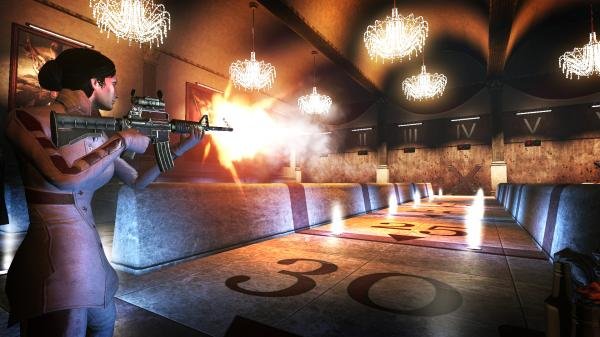
The main side quests come in four formats, all introduced through a fully-voiced cutscene: red are action, yellow are stealth, green are investigation and purple are dungeons (which are just for multiplayer groups). Reds are the bread-and-butter of the game; you’ll take them regularly to earn the AP necessary to beef up your character. The cutscenes and story elements surrounding them are nice, but the quests themselves usually just involve running from place to place, shooting and killing anything you find and then reaping the EXP at the end. Yellows were my least favourite, as they involved trying to sneak into bases and castles without being noticed – a mechanic that hasn’t been very well implemented and often leads to clunky trial-and-error gameplay.
By far the most appealing missions for an adventure gamer are the green investigations. These are the puzzle quests that involve little-to-no combat and instead have players researching local history and decoding messages. You also need to broaden your horizons by researching online via the built-in browser; Funcom has set up various dummy sites about the organisations you encounter, which you need to trawl through to get personnel details, addresses and passwords. The missions vary in difficulty but can take quite a while to solve, especially as the objectives can sometimes be vague, such as ‘find out more about the murders’.
I’ll describe a particular early investigative mission to give a better idea of how they play out. (As it’s one of many standalone quests that don’t spoil the main story, please excuse a few minor spoilers, though skip ahead two paragraphs if you'd prefer to avoid any.) An elderly lady named Norma Creed has you researching the Kingsmouth town history about a series of murders. I initially looked online, but not turning up much information meant I had to look round the town for more. I eventually stumbled across the town hall, with its conspicuously highlighted archive for me to snoop through. Interacting with the filing cabinets involves just a simple keystroke whilst looking at the drawer you wish to interact with. After checking through several cabinets, I found a newspaper clipping about the murders, with the full article popping up for me to read through.
Finding this new piece of information updated my quest and moved me on to Tier 2, with a generous boost to my EXP. The next goal was again fairly generic, but the news suggested that the sheriff’s office had been decidedly cagey when questioned about some of the victims, which suggested another visit to the sheriff could turn up something new. And so you’ll continue the story, chasing new leads and researching further information. You have to speak with NPCs (like the sheriff in this case) as well as solve riddles and crack codes to progress. There’s also a wide variety of environmental puzzles to accompany the investigations, like clicking panels in the right order or searching out where a signal is coming from, as well as a limited number of inventory puzzles where you need to find the correct keys or objects to proceed.

These are immensely satisfying missions that really stretch your puzzle-solving abilities and draw on a lot of Funcom’s expertise in the adventure field. A particularly lengthy one even had me recording a satellite signal on my phone. I literally held my own phone up to the speaker on my computer to analyse the waveform and crack the Morse code message being transmitted. I don't know if this was actually required by the mission, and you may be able to work out an alternate solution, but my phone was handy and sometimes you have to improvise to get the job done.
Just a handful of these would make up a fairly tricky adventure game, but The Secret World has at least 6-8 investigation missions per zone. That means there’s a lot of adventuring to be found here that will keep ardent genre fans occupied for a long time. The stories that accompany them are usually born from the surreal circumstances of the inhabitants. (Another spoiler alert for the same side-quest!) For example, the quest I detailed above will need you to die and not immediately reunite with your body in order to glean more information from ghosts in prison cells and uncover sinister goings-on in an eerie pumpkin patch. Each quest draws from the horror/science fiction genres, but the colourful cast and wonderful cutscenes help ensure the missions never take themselves too seriously and are a joy to complete.
Likewise, the main story that ties the whole game together is fantastic. It's a thoroughly well-written and in-depth narrative that takes folklore elements from the three main zones and weaves the action, stealth and investigation styles together wonderfully. You’ll follow the plot through Kingsmouth, Egypt and Transylvania, occasionally hopping back to London, with each area adding more and more to your understanding of the secret world and the organisations that wish to harness the strange forces in our planet. Oh yes, the three main factions aren’t the only ones interested in what the secret world has to offer. Over the course of your journey you’ll come across the sinister Orachi group and their inhuman experiments with a strange black ooze, as well as the Morning Light, a thinly veiled parody of scientology. It all culminates in the ethereal void that haunted your dreams at the beginning of the game for a final confrontation with the being that has been tormenting you.
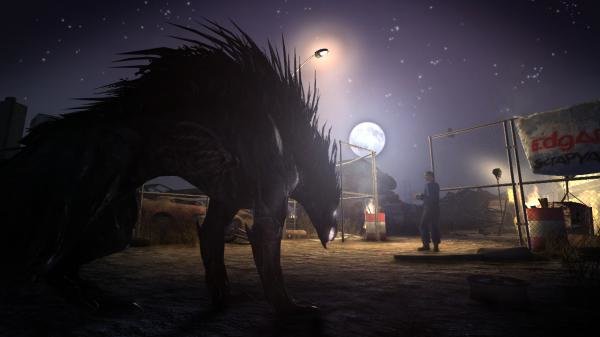
That’s not to say it’s ‘game over’ by the time you’ve finished, as this is an ever-growing and changing world. More zones are going to be added as the development team finish them (most likely arriving as a series of both free and commercial DLC), so consider this the end of Chapter 1 and we'll see what the future holds. Funcom have put a lot of support behind this game, and it has the potential to grow to be something special. There have already been several major updates since release to tweak the gameplay and fix bugs as well as introduce additional story missions in the form of new ‘issues’ for those who have completed the main quest. I’m led to believe that some hardcore MMO fans find the controls and combat a little outdated, but this shouldn't impact the less diehard action gamer. It is still, in the end, an online and at-times multiplayer RPG, and there’s no way around that, but I was able to play most of the game solo and found the design worked well enough that I had no trouble building one of the decks (a snazzy ‘Preacher’ character with a suitably cool costume to go with it). If you're not used to this sort of game it can be frustrating in the early days, but stick with it and you’ll find you soon get the hang of it.
Whether The Secret World is right for you boils down to how much combat you can tolerate and whether an MMO is something you’d like to try. I sank a fair few hours into this game every week, but nothing like what you hear some MMO players do, and spent a lot of it mashing number buttons. Combat is an ever-present element, but what kept it appealing for me was that I never felt I was simply building stats – even on action missions the stories are well thought-out and I constantly felt like I was moving the main story forward. In between fights, the green missions were pure adventuring, so the excitement of stumbling across a new one of those was palpable. The social side also means you can play through the investigations with a friend remotely, something not often possible in adventure games. There’s heaps of content here for the price, offering challenging puzzles and interesting characters to go with rich, vibrant landscapes and wonderfully eerie, atmospheric music to really assault the senses. It’s expertly crafted and a truly engrossing game which does its pedigree proud. If it in any way seems appealing, I’d recommend giving it a try – after all, there’s no monthly subscription anymore – as I found this to be one secret worth passing along.



